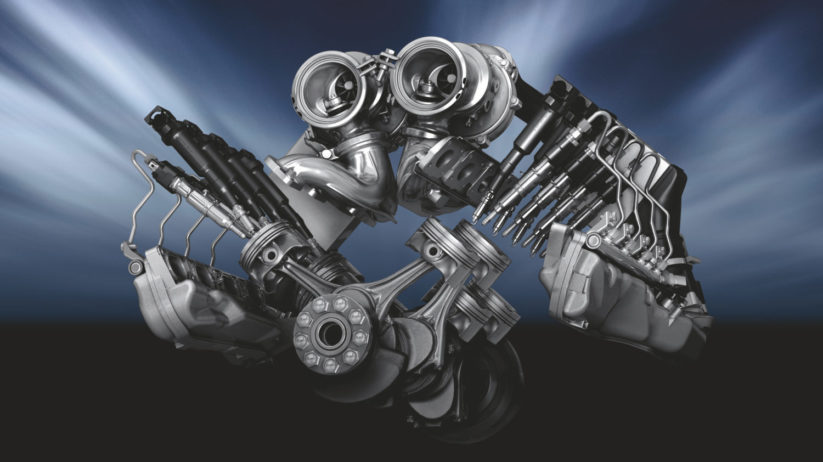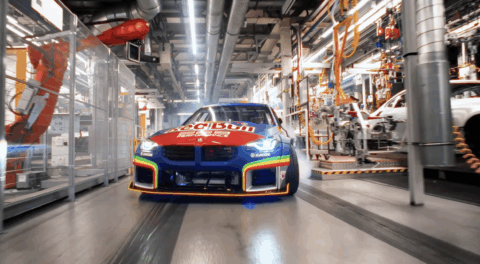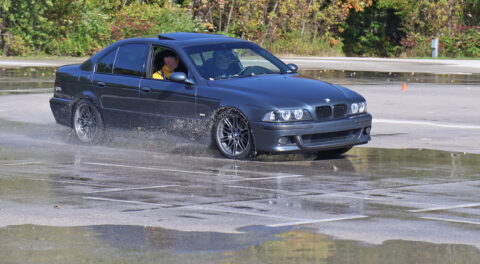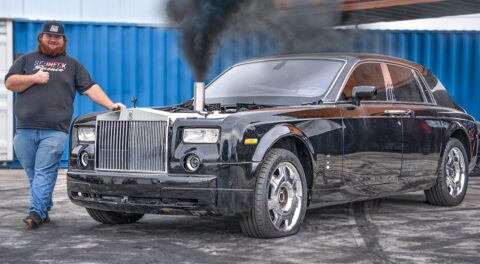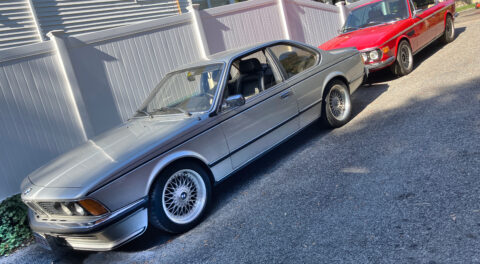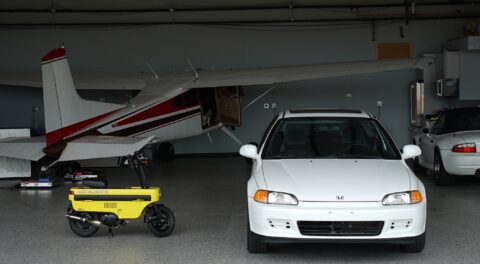BMW has been producing a 4.4-liter V8 since 1996. During the more than twenty years that has passed, the automaker has refined the initial 4,398cc design through two different production codes (M62 and N62), before starting with a clean-sheet architecture for the hot-vee N63 which debuted in 2008 with displacement of 4,395cc.
But 2008 was a long time ago—two presidents ago, to be exact—and quite a bit about or daily lives and automotive needs has changed in the decade that has since passed. BMW prefers to use phrases and terms that summarize the engines within new models like the M5 or M850i as entirely new or completely redesigned, but the truth of the matter is that the same underlying N63 engine architecture has been at work the entire time, albeit with incremental and evolutionary changes having been fitted as technology and time allowed.
Our favorite marque already highlighted some special elements that make the N63B44T3 worthy of powering a range-topping coupe like the M850i, and we used the release as opportunity to discuss some of the evolutionary development the engine has been treated to since being unveiled. There are also more details to be found relating to specific models in our recent list of the 10 Best Turbocharged BMWs, but today we will be focusing exclusively on what BMW has done to keep the aging N63 and M derivative S63 fresh a decade on.
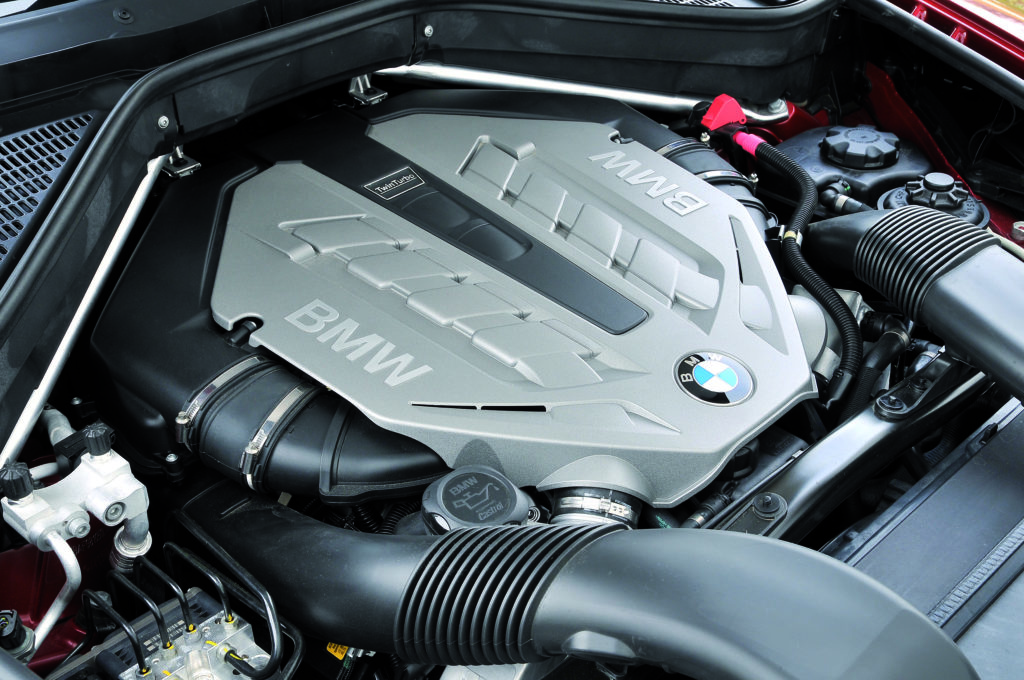
Groundbreaking in its design which was the first to market with a hot-vee configuration and other cutting edge technology like direct injection working in conjunction with twin turbochargers, the initial N63 was internally referred to as N63B44O0. Factory rated output was 402 hp between 5,500 and 6,400 rpm, with 443 lb. ft. of torque available from 1,750 to 4,500. Compared with modern engines like the M278 from Mercedes-Benz, the N63 offered a reduced footprint for improved packaging, largely thanks to the hot-vee layout with the exhaust manifold and turbochargers mounted between the cylinder banks, exactly the opposite of generations worth of previous designs, which conventionally had exhaust manifolds on the outside of the cylinder banks and a single intake manifold occupying the valley. Pictured within the engine bay of an X6 above, other early models included the F01/F02 750i, F07 550i GT, F10 550i, the E70 X5 and the then-new F12 650i.
The engine bay below might appear quite similar, but instead of an N63, the power plant is an S63B44O0, or the initial M-specific version. Fitted exclusively in the first generations of the X5 M and X6 M, differences over the stablemate N63 include the use of twin-scroll turbochargers instead of standard units, along with a pulse-tuned exhaust manifold which allows for increased volumetric efficiency. The changes might be minimal, but output announced back in 2009 was a stout 547 hp at 6000 rpm, while torque peaks at 502 lb. ft. from 1,500 to 5,650.
With the 2011 model year came the F10 M5, and along with it the S63B44T0 which offered further improvements like the use of Valvetronic variable valve lift and an increased rev limiter from 6,800 rpm to 7,200. Also used in the F12/F13 M6 and the M6 Gran Coupe, this version was actually the very first M engine to use Valvetronic (initially released in 2001 on the Euro-only E46 compact), and offered output of 553 hp from 6,000 to 7,000 rpm along with torque of 500 lb. ft. from 1,500 to 5,750.
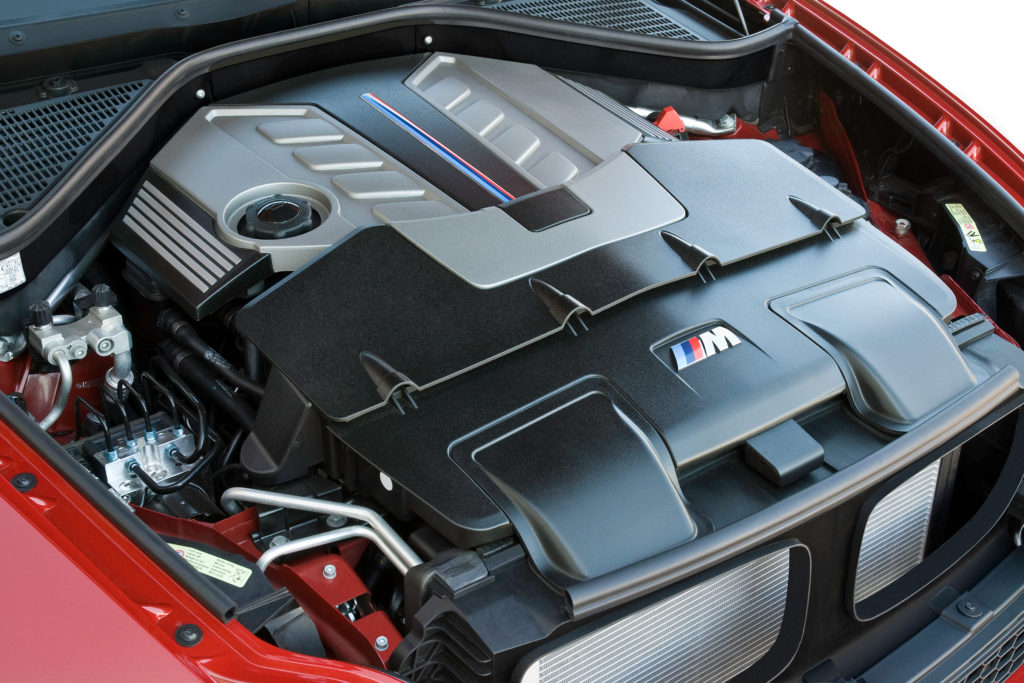
For 2012, some four years after initial versions were first fitted to production vehicles, the first technological update for the N63 was put into manufacturing, destined for 2013 model year BMWs. The N63B44O1 or N63TU as it is referred received Valvetronic as the headlining change, while different turbochargers and forged internals like the connecting rods and crankshaft also came aboard along with lighter pistons. The blowoff valve was deleted as it is not necessary in a Valvetronic-equipped engine, an oil catch can was added to the lubrication system, and an additional, secondary coolant pump was integrated. Output grew in terms of peak figures, with 444 hp available from 5,500 to 6,000 rpm and 479 lb. ft. of torque from 2,000 to 4,500. Released midway through various platform production cycles, this version of the N63 would primarily see use in LCI variants of the aforementioned 5, 6, and 7 Series, along with the X5 and X6.
Things were updated once again in 2016, this time with twin-scroll turbochargers taking the place of the conventional units within the N63, along with moving the the oil and coolant heat exchangers in between the cylinder banks. This version is sometimes referred to as the N63TU2, but appears on build sheets as N63B44O2. Efficiency and drivability both improved thanks to a more usable rev band, but output remained nearly identical to the previous iteration with 444 hp from 5,500 to 6,000 rpm and 480 lb. ft. of torque available from 1,800 to 4,500. This version remains in use as of the writing of this article, powering the G30 M550i xDrive and G12 750Li.

Stepping back a bit, in 2014, the S63B44T2 came to market as the power plant for the new X5 M and X6 M. Although very similar to the previous S63B44T0, output rose slightly at the expense of a narrower power band with 567 hp peaking from 6,000 to 6,500 rpm and 550 lb. ft. of torque on offer from 2,200 to 5,000.

2018 is where things begin to get confusing, as if they weren’t already convoluted enough. Both the new G05 X5 and M850i are receiving their own specific updated versions of the N63. Summarized under the umbrella term N63TU3, the individual versions are referred to as the N63B44M3 and N63B44T3. Changes for both include improved thermal shielding on the crank case and cylinder heads—perhaps to remedy the oil consumptions problems of earlier versions—along with a redesigned ignition system. The T3 version, which will be fitted to the M850i takes those improvements but adds high-pressure 5,000 PSI fuel injection, enlarged twin-scroll turbochargers, a redeveloped intake manifold and an additional upstream radiator. Output for the N63B44M3 of the upcoming X5 is rated at 456 hp between 5,250 and 6,000 rpm with 480 lb. ft. of torque on tap from 1,500 until 4,750. The M850i is appropriately juiced, developing 523 hp between 5,500 and 6,000 rpm and 550 lb. ft. of torque from 1,800 until 4,600. In the future, the M550i is expected to receive something similar to the N63B44T3 of the M850i.
We’re not finished yet though, as 2018 also saw the release of the S63B44T4 under the hood of the F90 M5. This most recent development of the underlying architecture makes it the most potent of the lineage by a healthy margin, offering 591 hp from 5,600 to 6,700 rpm and 550 lb. ft. of torque between 1,800 and 5,600, but BMW didn’t stop there. Following the release of the standard model last year, a few months ago the M5 Competition was announced, with even greater tire-melting specs that included 617 hp peaking at precisely 6,000 rpm and 553 lb. t. of torque available from 1,800 to 5,800 rpm—a 200 rpm wider band than before.
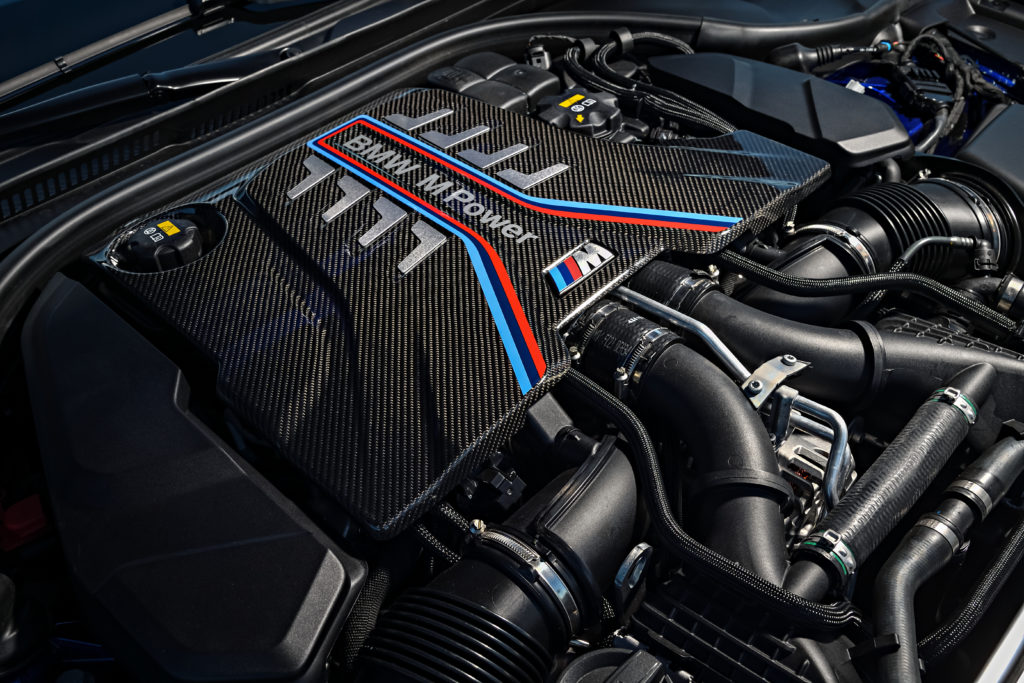
After all that, you might still be asking about the unique differences between the N63 and S63, and the technical specifics which allow one to generate so much more power and torque than the other. Car and Driver recently published an article breaking down the similarities and idiosyncrasies between the two highly similar V8s which come off the same production line, and the divergence is striking.
The S63 and N63 use the same aluminum-silicone alloy blocks with identical cylinder dimensions, but the M5 Competition’s engine receives cross-bolted main bearing caps along with its own unique cooling and oiling passages as opposed to the upcoming G05 X5. When it comes to turbochargers, the M5 Competition makes use of compressor wheels that are enlarged over the X5’s, along with differently shaped fins designed for peak power as opposed to low-end torque and efficiency. Manifold pressure peaks at 11.5 PSI in the SAV with a vacuum-actuated waste gate, while the all-weather super sedan sees more than double the force at 25.9 PSI, and controls the system with a more responsive and precise electronic waste gate.
Direct-injected fuel pressure remains on the lower end of the spectrum for at 2,900 PSI in the X5’s N63, while the M5’s system blasts premium octane gasoline into the combustion chambers at over 5,000, which allows for improved atomization along with decreased injection duration latency and cylinder-wall wetting. The fuel pump and injectors used in the S63 of the M5 competition employ their own upgraded materials for their internal components. Pistons also differ between the two. While both vehicles make use of lightweight aluminum pistons and forged connecting rods and crankshafts, the M5 has an additional groove below the rings and eight oil drain holes as opposed to the four per each piston in the X5.
Lubrication differs as well, with the M5 benefitting from sixteen oil sprayer nozzles compared to eight in the X5. Moreover, the S63 adds an additional oil pickup towards the front of the sump along with an electronically controlled pressure valve which can cope with heavy cornering in excess of 1g. Additionally, the M5’s sump has a capacity of 11.2 quarts compared to 10.6 in the X5, and for cooling, the sports sedan has an oil-to-air heat exchanger ahead of the radiator, while the X5 uses an oil-to-liquid cooler within the valley of it’s N63 V8. Both use the same hot-vee design, but the M5 employs a four-into-two crossover manifold with better efficiency for peak power, while the X5 has a simpler design that does not separate the gases between cylinders.
Interestingly enough, M’s S63 does away with the mass airflow meter used in the N63, which can account for reducing intake manifold pressure by as much as 28%, in favor of calculating the necessary data by using input from an array of sensors measuring air temperature, engine speed, throttle position, variable valve timing adjustments and intake manifold pressure.

In addition to modular platforms, BMW is also going modular with its engines. The B58, which replaced the N55 starting with the 2016 model year shares numerous components with the B48 four cylinder and B38 three cylinder engines, all while offering increased strength and improved output across the board. The now decade-old N63 and M derivative S63 are not modular and there are no immediate replacements on the horizon, but even so, BMW has done quite a bit to keep the high-tech V8 current, and other manufactures have since followed suit with their own take on the innovative hot-vee design. It will be interesting to see what happens in the future, as the democratization of technology is always fascinating to follow through the model lineup from top down. But wait a minute, we haven’t even talked about the Alpina versions yet!—Alex Tock
[Photos courtesy BMW Group.]

